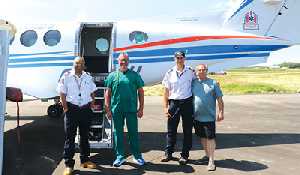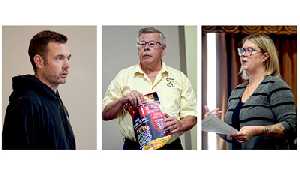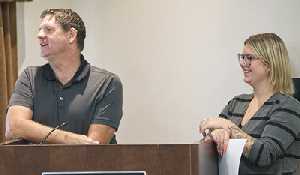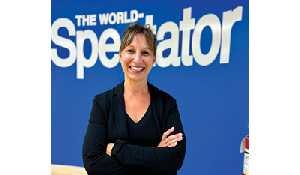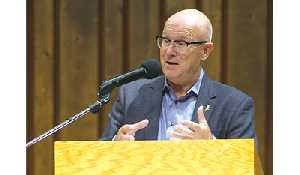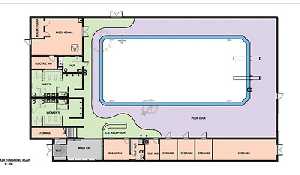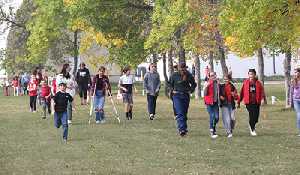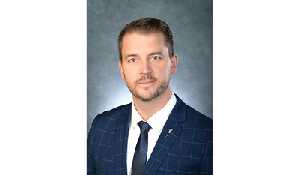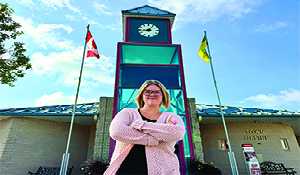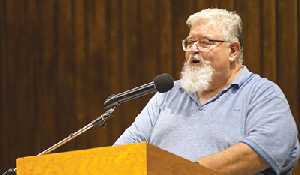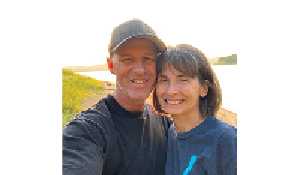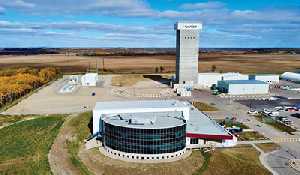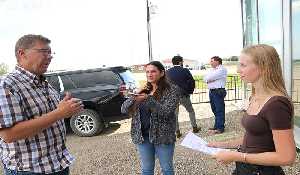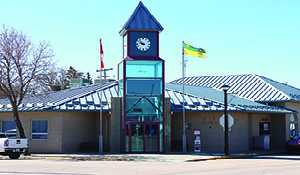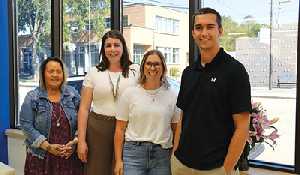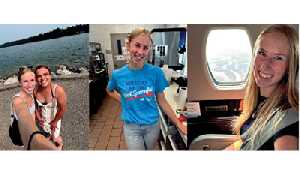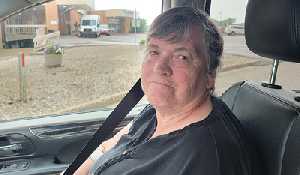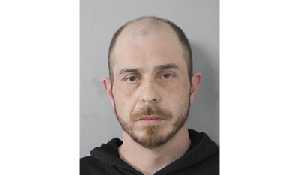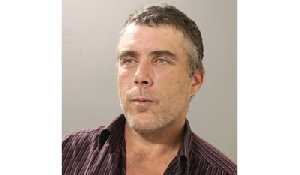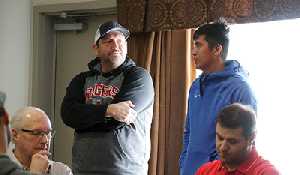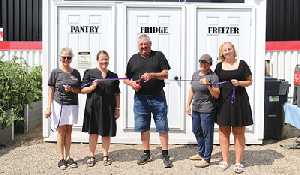Minister sees a path forward for Moosomin CT scanner
Rural and Remote Health Minister speaks at Chamber meeting
September 16, 2024, 10:08 am
Ryan Kiedrowski, Local Journalism Initiative Reporter
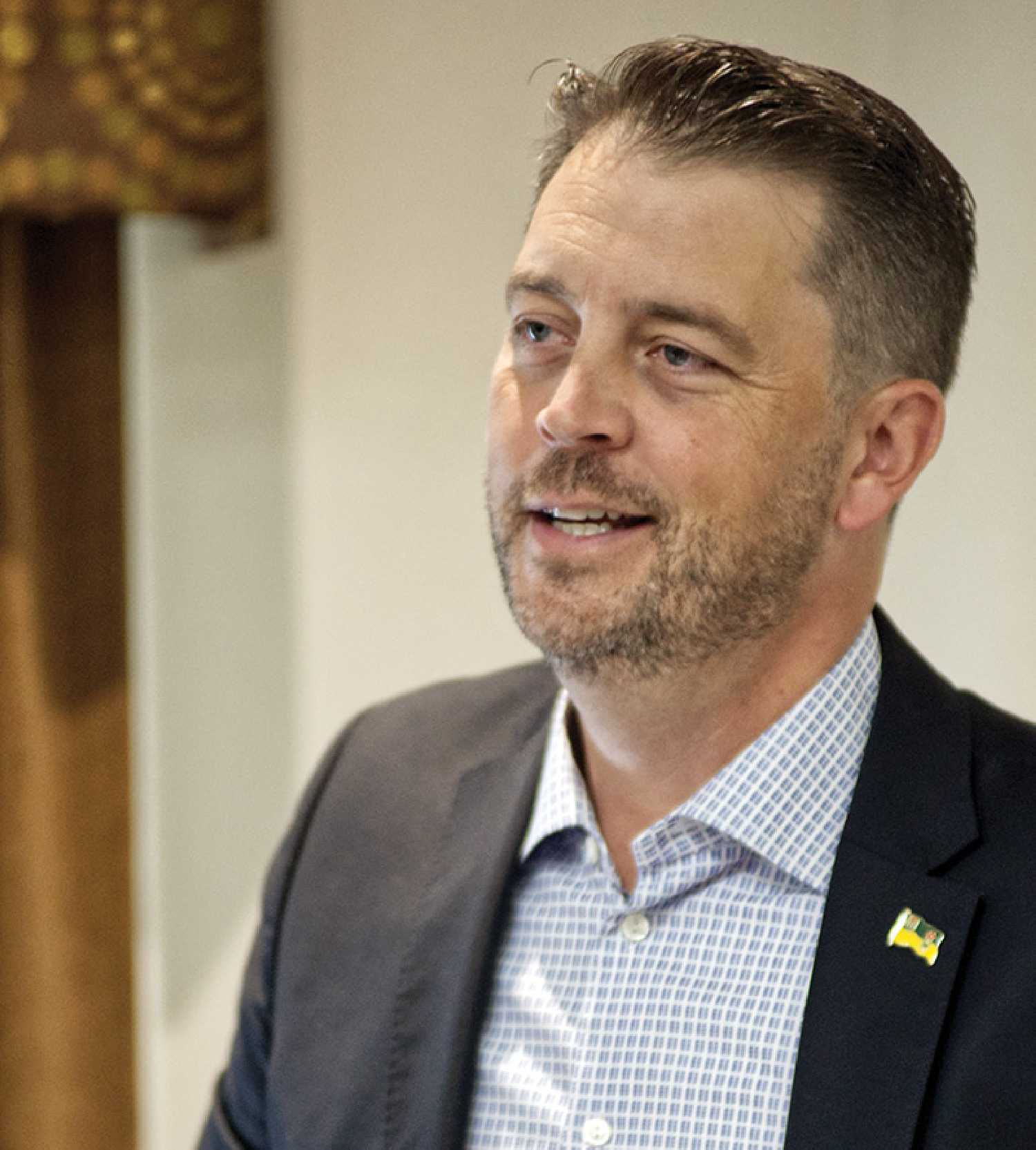

Tim McLeod, the Saskatchewan Minister of Rural and Remote Health, was invited to speak at the Moosomin Chamber of Commerce meeting on Tuesday. MacLeod also spoke about finding a path forward for a CT scanner in Moosomin.
He opened his time at the podium by wishing his colleague, Steven Bonk, well in his future political endeavours.
“First and foremost, I want to acknowledge current MLA and your next Member of Parliament, Steven Bonk,” McLeod said. “Steven and I were seat mates last year, and I’ll tell you, I wasn’t done learning from Steven yet, so I’m a little bit disappointed that he’s leaving us at the provincial level, but he’s certainly going to do a fantastic job for Souris-Moose Mountain at the federal level.”
McLeod was quick to highlight some of the achievements Moosomin has made in recent years, pointing to having a strong complement of 14 physicians in the community. He also acknowledged the medical residency training program that was added to Moosomin in 2021, and mentioned the Rural Physician Incentive Program increasing to $200,000 over five years.
“Your provincial government is providing valuable tools to help Moosomin continue to recruit, train, incentivize and retain physicians for years to come,” McLeod said. “Moosomin has also seen success with other healthcare staffing since we initiated the Health Human Resources Action Plan, which was first announced in the fall of 2022—two RNs, a CLXT and two MRTs have been successfully recruited to Moosomin as a result of that program. I was also pleased to see that the Moosomin Airport upgrade project is underway, which when completed, will support access for the air ambulance—another critical piece to our healthcare system.”
Commitment to CT scanner
The biggest topic McLeod was anticipated to broach was that of a CT scanner coming to Moosomin. Back in March, McLeod said that the government had found a path forward for a local CT scanner, but details needed to be ironed out.
“We’re excited to continue to work together with the community,” McLeod told the World-Spectator moments before the Chamber meeting. “I know on Budget Day last spring, we were excited to be able to say that we’re committed to finding a path forward for the community, because this is something that has certainly been on the radar for some time, and that’s certainly something I’m happy to talk to the community about here today.”
McLeod explained that what makes the plan for Moosomin unique is that the proposal falls outside of current Saskatchewan Health Authority policy, requiring the development of a supplemental policy that would be viable for Moosomin, but could be used for similar proposals that may come forward from other communities in the future.
“Determining what is possible in Moosomin is an important consideration,” McLeod told those gathered at the Chamber meeting. “I understand that there may be a desire to have a CT scanner located within the hospital, the challenge would be finding space that works. The SHA has advised that there’s currently no unused space in the hospital. They’ve also advised that, on a technical level, the current ultrasound room is not large enough to accommodate a CT scanner. They’ve also advised that a formal assessment is required in order to determine whether usable space may exist and what significant renovations may be required to accommodate that. I also understand that representatives of the community had preliminary conversations with Prairie Sky Medical Imaging to clarify how privately-operated medical imaging providers operate in the current system.”
With a private model, the provider would need to determine whether or not a sufficient business case would exist, where privately-operated medical imaging providers are required to provide one free scan to the healthcare system for each one done privately.
“Privately-operated medical imaging providers may have contracts with the SHA to provide scans to the SHA outside the two for one system, if the SHA determines that they need that for their capacity,” McLeod further explained, adding that the private operators typically do not offer emergency scans and usually operate during daytime hours.
What McLeod does see as a greater challenge is that of staffing. Medical Radiation Technologists are in high demand throughout the healthcare system nationwide right now, and are difficult to recruit.
“We appreciate the community’s offer to contribute to the training on the healthcare side, we need to be mindful that this challenge extends beyond Moosomin and needs to be viewed in the big picture across the board,” McLeod said. “The ability to staff a CT scanner in any rural community—whether it is Moosomin or any other community that may come after—is our greatest concern. We are actively exploring potential solutions to address this issue with broader solutions that we have not yet fully fleshed out or otherwise confirmed to be viable.”
Mayor Larry Tomlinson asked McLeod what kind of timeline would be available in order to move ahead on the CT scanner project.
“Anything that’s been asked of us, we’ve done,” he said, pointing to strides made locally through recruiting and financial commitments.
“I can’t give you a firm timeline, unfortunately, but I think if we put our heads together, we can find that path,” he said.
Another question referenced wait times of three to four months for a CT scan, wondering if long wait times translate to a greater overall need.
“If you’ve got a few individuals who are waiting because they’re going to the next nearest community, the wait times at each of those communities is different, right? The wait time in Moose Jaw is going to be different than the wait time in Yorkton, and it’s going to be different than the wait time in Regina,” answered McLeod. “The SHA and the providers are trying to load level where possible, but some patients—for whatever reason—maybe they can’t make it to the next nearest community. Maybe they simply choose not to, and they’d rather wait on the list for their preferred location. There’s a variety of factors that we have to look at, and you can’t look at any isolated single case to make that determination.”
McLeod confirmed that load levels at each site are being monitored and capacities are being met.
“The two-for-one system has been incredibly successful to those that want to speed up their timeline and get through the system faster, that option is there for those that can afford it as well,” he said.
Sparse staff also contributes to those long wait times.
“Adding another CT scanner that needs to be staffed kind of spreads that shortage further,” explained Assistant Deputy Health Minister Ingrid Kirby. “So that’s one of our challenges here is staffing. It’s not the fact that we need more equipment—that we need more physical CTs—it’s the staffing that’s challenging.”
Last year, the province added 550 post-secondary training seats across 18 health programs (including MRT), but Kirby noted there will be a wait for the next batch of grads to formally hit the workforce.
“We did increase the number of training seats for MRTs, unfortunately, the regulator also increased the length of training, they added six more months to it,” she said.
The program at Saskatoon-based Saskatchewan Polytechnic begins in September and runs for 96 weeks. Applications for the two-year program open on Oct. 1 then close on Feb. 15, and students can expect a total base tuition of just over $28,000. A career in general radiology can also lead to specializing in certain fields such as computerized tomography, mammography or angiography.
“It’s a designation that’s used a lot in the health system in a lot of really key critical areas,” Kirby explained. “Even with the numbers we’ve added for training, it’s still not enough to meet our current need level.”
Next steps for Moosomin
Given the unique situation Moosomin finds itself in, the question of where to go from here was asked.
Chamber president Kevin Weedmark asked how a supplemental policy reflecting that uniqueness could be drafted. To illustrate his point, Weedmark pointed to facts such as the high number of doctors in town (the highest number per capita in the province), Moosomin being the only community of 3,000 in Canada where a medical residency can be done, and being the smallest centre in Saskatchewan to offer oncology.
“We think that we’re unique in all these ways, and is there some way that can be reflected in this supplemental policy?” Weedmark asked.
In his reply, McLeod noted the importance of crafting policy reflecting the specific needs of Moosomin and surrounding areas.
“I would say Kevin, exactly for those reasons, is why we’re working with the community and why we want to work with the community so that we aren’t creating a policy outside of your needs and what this community can offer,” he said. “The path forward, I believe, is in conversation and collaboration between the Ministry and the community so that we can identify what are those unique qualities and maximize on those in the policy that ultimately we can craft together.
“The next step forward would be to strike a committee that we can work with directly through the Ministry, and that we can meet and discuss those issues that we were just talking about earlier,” McLeod continued. “What’s it going to look like? Where could it fit? We can bring officials to that meeting that are going to say, ‘here are the dimensions of what you’re going to need, here are the requirements in terms of lead-lined walls’ and all of that sort of thing. Then the community can bring to us the options that we can present to meet those criteria.”


